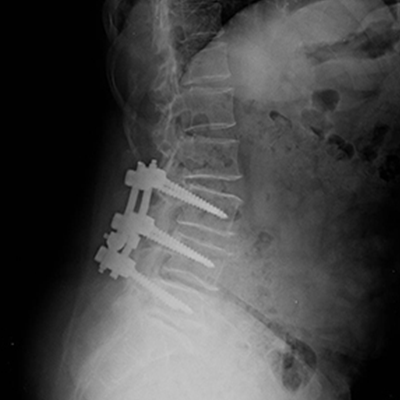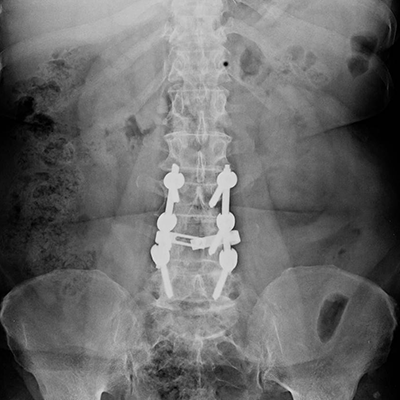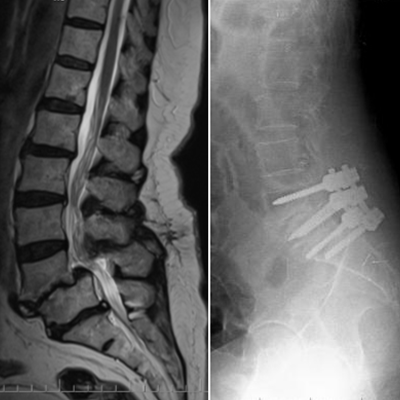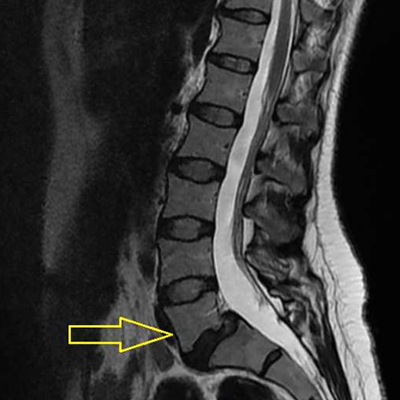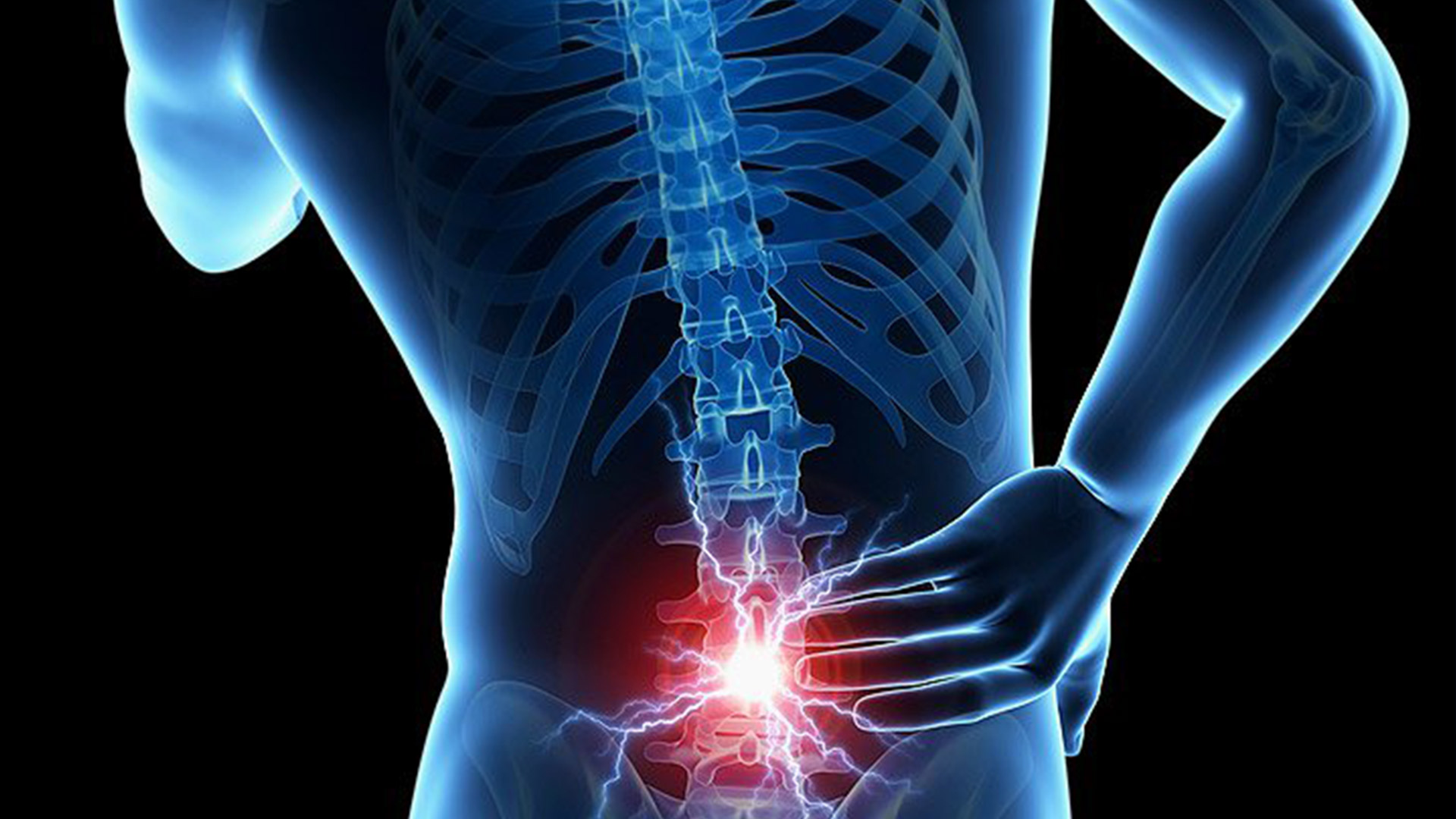
Spondylolisthesis
The vertebrae that make up our spine are arranged in a specific order on top of each other. Normally, the front and back edges of the vertebrae are aligned with the edges of the upper and lower vertebrae. The vertebrae are connected to each other through discs in the front and facet joints in the back. Many ligament structures also bridge the bones between them, increasing the durability of this arrangement. In the condition known as spinal slippage, one vertebra usually moves forward over another. As a result of this movement, the spinal cord passing through the spine is compressed, causing symptoms such as pain, numbness, and burning in both legs. There are five types of spinal slippage. The most common ones being those caused by degeneration in old age, those that develop after surgery, and those caused by congenital problems in childhood vertebrae. These fractures are called spondylolysis.
In approximately 5% of people, there may be a developmental fracture in the bone that connects the upper and lower joints of the vertebrae in the lower part of the lumbar region (facet joints). These fractures are called ‘’spondylolysis’’. Fractures that occur in this region due to its high mobility may often not heal. However, these fractures usually cause pain in adolescence but may not cause serious problems in adulthood. In some patients, the fracture may cause the upper vertebrae to shift forward compared to the lower spine.
his condition is also called “spondylolisthesis” or “vertebral slip.” Spondilolistezis can lead to more serious problems depending on the amount of slippage. Spondylolisthesis, caused by this type of fracture, is referred to as “isthmic spondylolisthesis” in medical terminology.
Another type of curvature of the spine occurs due to aging and wear and tear on the spine and surrounding connective tissues. This problem, which typically occurs after the age of 40, is referred to as “degenerative spondylolisthesis.” Narrow canal is usually associated with degenerative curvature of the spine.
Typically, the first symptom of curvature of the spine is back pain. It can be followed by complaints of numbness, muscle tension, weakness, increased curvature of the spine, or difficulty walking in the legs. Although these symptoms can be temporarily relieved by rest, pain usually increases with standing, walking, and other activities.
Stress fractures (spondylolysis) may not always produce clinical symptoms. They can sometimes be discovered incidentally on spinal x-rays taken for other reasons. If the pathology becomes symptomatic, the first complaint is usually pain in the lower back. Curvature of the spines may also be asymptomatic even years after the slip has occurred. Symptoms include lower back and hip pain; numbness, pain, muscle tension, weakness, increased lumbar inclination or difficulty in walking. Although these symptoms may be temporarily relieved with rest, the pain usually increases with standing, walking and other activities.
SYMPTOMS OF Spondylolisthesis
In some cases, people with spinal slippage may not show any symptoms. However, for those who do, symptoms may include pain in the lower back and hips that increases when bending forward and decreases when bending backward.
- Pain that worsens with walking and numbness in the legs
- Leg cramps in the evenings, difficulty moving
- Weakness in the legs
- Excessive sensitivity in the sliding spinal region may also occuR
ABOUT SPONDYLOLISTHESIS
1) Congenital Problems
The most common cause of spondylolisthesis in children is congenital anatomical problems or problems experienced during birth.
2) Bone Diseases
The cause of low spondylolisthesis in adults is often joint inflammation, bone and cartilage tissue diseases such as calcification.
3) Receive a Blow
A blow to the waist or movements that strain the spine can cause a slipped back. Examples of these reasons are as follows:
- Challenging sports such as gymnastics, football or bodybuilding
- Uncontrolled falls on the hip
- Working in a physical labour-based job with requirements such as heavy lifting
- Because of these factors, athletes, football referees and acrobats often suffer from slipped backs.
4) Other causes
The following factors can also cause to spondylolisthesis in the long term:
- Constant stress fractures on the vertebrae due to running, light impact, etc.
- Bone tumours occurring around the vertebrae
- Weakening of muscles and connective tissues due to old age
It is appropriate to follow up stress fractures and spondylolisthesis that do not cause complaints. Rest, painkillers and anti-inflammatory drugs, the use of temporary corsets and one or more of the physiotherapy methods can provide relief from complaints in mild slips.
If there is leg pain and numbness due to nerve compression along with low back pain, epidural or foraminal injections can be added to the treatment.
Stress fractures seen in adolescence should be treated surgically if they cause pain and limit the activities of young people. The most appropriate method in surgical treatment is determined by your physician. The generally preferred method is to support the fracture site with fresh bone grafts for fusion and fixation with screws or hooks. In our clinic, with many years of experience, this procedure is performed for only one vertebra. With this method, which can be defined as a kind of fracture repair, recovery is achieved in the short term and our patients regain their old activities without any restriction in waist movements.
Surgical treatment is necessary if the disease causes complaints that do not decrease with medication, causes signs of nerve compression (drop foot, urinary incontinence…) and progresses in advanced ages. In surgical treatment, the nerves in the slip area are released and the vertebrae are fixed to each other to prevent the progression of the slip. The operation can be performed from the front or back or from both sides.
The healing process is supported by rehabilitation programmes applied after surgery.
If the slippage is mild, rest, painkillers and anti-inflammatory drugs, temporary corset use and one or more physiotherapy methods may be recommended. If nerve compression is present with low back pain, epidural or foraminal injections can be added to the treatment.
Surgical treatment option is considered in cases of pain that does not go away with medication and additional applications. In the surgical treatment of slipped disc, the nerves in the slip area are released and the vertebrae are fixed to each other to prevent the progression of the slip. The operation can be performed from the front or back or from both sides. Postoperative rehabilitation programmes can be beneficial in accelerating the healing process.
The expert physiotherapist staff of our hospital starts the rehabilitation of our patients from the first day after surgery. Our patients are taught daily movements such as getting out of bed, walking and climbing stairs in detail before leaving the hospital.


